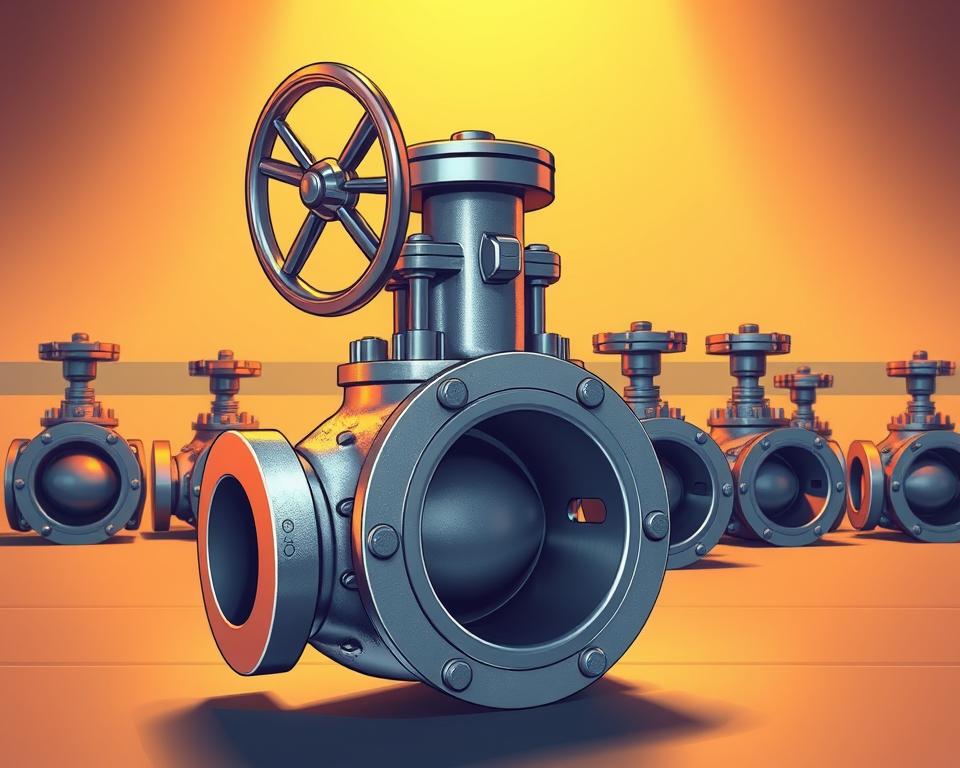Cast Iron Gate Valves: Long-Lasting Utility Flow Control
Good to know: More than three-fifths of public distribution networks still rely on traditional shutoff hardware for secure isolation during emergencies.
Explore our workhorse line of Cast Iron Gate Valve Manufacturer designed for longevity in industrial, commercial & municipal use nationwide. Each unit pairs a rugged body and bonnet with a well-proven gate design to withstand wear and limit corrosion under variable pressure and temperature cycles.
The unobstructed gate cuts flow restriction in the open position, helping systems move water and compatible media with lower pressure drop. Specifiers and technicians value the simple serviceability, widely used connection options, and widely available parts that simplify selection and repairs.
This portfolio covers a variety of series and pressure classes to meet standard duty ranges, end connections, and operator preferences. You get consistent sealing, uniform operating torque, and cost-effective ownership aimed at uptime and low life-cycle cost.
Highlights
- Engineered for rugged shutoff and dependable flow control in demanding environments.
- Robust build stands up to wear, corrosion, and mechanical stress.
- Straight-through design offers minimal resistance and less pressure loss.
- Provided in several series and class ratings to match common specifications.
- Service-friendly design, standard parts, and consistent sealing improve uptime.
Reliable, Precise Flow Control with Cast Iron Gate Valves
Engineered shutoff units with accurate wedges and precision seats offer consistent performance across commissioning, operation, and shutdown cycles. Rigid iron bodies and close-tolerance seating enable repeatable sealing. That consistency supports safe isolation and cuts unplanned downtime.
Low-effort behavior lower handwheel effort and enable confident wedge positioning. Straightforward stems and common accessories make it easy to adapt a valve to manual handles or actuators. Reduced effort accelerates routine checks and repairs.

Rising vs Non-Rising Stem Performance
| Feature | Rising-Stem | Nonrising Stem |
|---|---|---|
| Open/close visibility | High — easy visual readout | Low — minimal external cue |
| Clearance needs | Requires vertical space | Good for confined/buried installs |
| Maintenance | Straightforward inspection | Compact with comparable life |
When fully opened, the unobstructed passage delivers low pressure loss and smooth throughput. Tight sealing reduces leakage risk and helps keep target pressure for downstream equipment. In combination, these traits reduce total life-cycle cost and enhance system uptime across common commercial and light industrial applications.
Cast Iron Gate Valves: Specs, Designs, and Options
Detailed design choices—body alloy, stem type, and flange standard—dictate performance, fit, and service ease.
Body and bonnet construction
The body and bonnet are cast iron for structural strength and vibration resistance. Precision-machined guides maintain gate alignment for consistent sealing.
Comparing Rising and Non-Rising Stems
A rising stem offers a visible position reference and allows easy inspection but requires overhead space. A non-rising stem minimizes vertical space and shelters threads in the bonnet.
Both stem designs work with standard handwheels and can be configured for actuators or external position indicator accessories when automation is required.
Class 125 Guidance
ASME Class 125 is common for water and general service within moderate temps. Refer to published pressure-temperature limits to confirm suitability for the intended operating envelope.
Flange Details and Dimensions
| Parameter | Guideline | Notes |
|---|---|---|
| Flange drill pattern | ASME/ANSI pattern | Fits standard piping layouts |
| End-to-end | Industry series lengths | See datasheet for dimensions |
| Bolt pattern | Specified grade/torque | Gasket selection affects sealing |
- Sizes/series: available from small line sizes to larger mains with several series and trim packages for long life and easy service.
- Trim choices and packing: seat/wedge materials optimize tight shutoff and longevity; enhanced packing and bonnet gaskets tighten stem sealing.
- Integration tips: confirm end-to-end dimensions, flange bolt patterns, and torque requirements before installation.
Use Cases, Compliance, and Integration
Applications for these Resilient Seated Gate Valve cover municipal mains, building risers/standpipes, and pump-room isolation points where consistent shutoff is essential.
Water distribution and fire systems routinely deploy these as sectional and control valves. They provide readable position and strong shutoff for life safety and utility networks.
Flow, shutoff, and bi-directional service
The gate design allows shutoff in either flow direction when installed per manufacturer guidance. This versatility eases layout choices and enables redundant piping.
Maintenance & Stem Sealing
Service-accessible bonnet hardware, guided wedges, and serviceable packing make inspection and repacking faster. Correct packing compression keeps stem sealing during frequent operating cycles.
Indicators, OS&Y, and Orientation
External indicators and OS&Y styles provide visible open/closed status for inspections. Even with bi-directional capability, follow recommended direction orientation and clearance rules to ensure safe operation.
| System | Key Benefit | Design Check |
|---|---|---|
| Municipal mains | Dependable isolation | Verify Class 125 limits |
| Fire systems | Visible status for AHJ | Provide indicator/OS&Y style |
| Building pump rooms | Ease of maintenance | Match flange and face-to-face dimensions |
Final Thoughts
Choose proven shutoff equipment combining sturdy construction and predictable flow control.
These valves deliver durable isolation and reliable control across water and utility systems. Count on straightforward installation and service-friendly upkeep for lasting reliability.
Key specs include Class 125 rating, a robust body and bonnet, and engineered stem sealing to keep performance steady across commercial and plant environments.
Several series in common sizes, plus handwheel or actuator-ready configurations, simplify system matching. Clear position indication and smooth stem travel enhance daily operation and response under variable conditions.
The wedge-and-seat design enables leak-tight closure and low pressure loss. Double-check sizes, end connections, and accessories at specification time to speed procurement and commissioning.
Select valves built to rigorous standards. We can review class, sizes, and series to align selections with your operating and maintenance goals.
